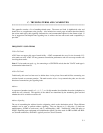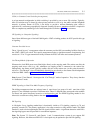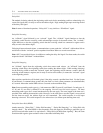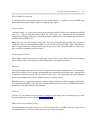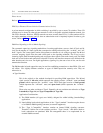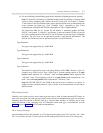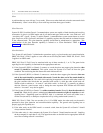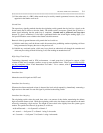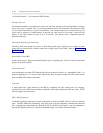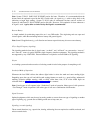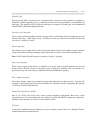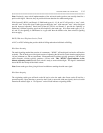C-8 TRUNKING TERMS AND CAPABILITIES
_ ___________________________________________________________________________________________________________________________
_ ___________________________________________________________________________________________________________________________
_ ___________________________________________________________________________________________________________________________
Glare
A problem that can occur with any 2-way trunks. Glare occurs when both ends seize the same trunk circuit
simultaneously. Glare is more likely to occur with loop start than other types of trunks.
Glare Detection
System 85 (R2V4) and the Generic 2 communications system are capable of both detecting and resolving
occurrences of glare in (a) ISDN trunks and (b) all other trunk types which use the ‘‘true wink start’’ and
‘‘true delay-dial’’ signals. System 75 and the Generic 1 communications system cannot detect or resolve
glare. Proper use of this System 85 and Generic 2 capability requires that each trunk be evaluated in terms
of the connected node. The glare detection capability should then be administered as appropriate. This
administration of the glare detection capability is referred to as "Glare Resolution." Refer to "Glare
Resolution" for additional details.
Glare Resolution
Two System 85 and Generic 2 administration procedures apply to glare detection and control/resolution.
PROC 100, Word 3, Field 3 applies to a true wink start or true delay-dial trunk. PROC 262, Word 1, Field
5 applies to an ISDN trunk.
PROC 100, Word 3, Field 3 may be translated with any of three encodes (0, 1, or 2). The general rules
regarding how this capability is translated for the appropriate trunks are:
(1) If the System 85 (R2V4) or Generic 2 connects to a node that does not support glare detection, then
encode (2) should be translated. This option causes the System 85 to back off from the glare
condition. The result being that the distant-end switch initiates the call.
(2) If the System 85 (R2V4) or Generic 2 connects to a node that does support glare detection, then one
end of the trunk should be translated with encode (2) and the other end of the trunk should be
translated with encode (1). The result of this optioning arrangement is that one switch takes control of
the glare condition (the switch that was translated with encode 1), while the other switch backs off.
Which switch to translate as ‘‘in control’’ and which switch ‘‘to back off’’ is generally an arbitrary
decision. However, sound reasons such as letting the more important ETN-Tandem and ETN-Main
nodes be ‘‘in-control’’ may also be applied.
(3) If the System 85 (R2V4) or Generic 2 is neither translated encode (2) or (1), then the alternative is
encode (0). When the (0) option is administered, then each occurrence of glare is treated as a trunk-
signaling error." Depending upon how RETRY, field 4, is translated, the switch will either issue a
reorder tone (encode 0) or attempt to complete the call by seizing another trunk (encode 1).
PROC 262, Word 1, Field 5 has two encodes (0 or 1). For ISDN trunks, the other entity on the trunk is
presumed to have glare detection and control/resolution capability. The general rules regarding how to
properly apply this capability are:
(1) If the other entity on the ISDN trunk is a network switch, then the System 85 or Generic 2 should
always translate encode 0.
(2) If the other entity is a host computer, the System 85 or Generic 2 should translate encode 1 (implying
the host computer is equivalent to a 0). The opposite encodes are feasible but less appropriate when the
rest of the switching network is considered.




